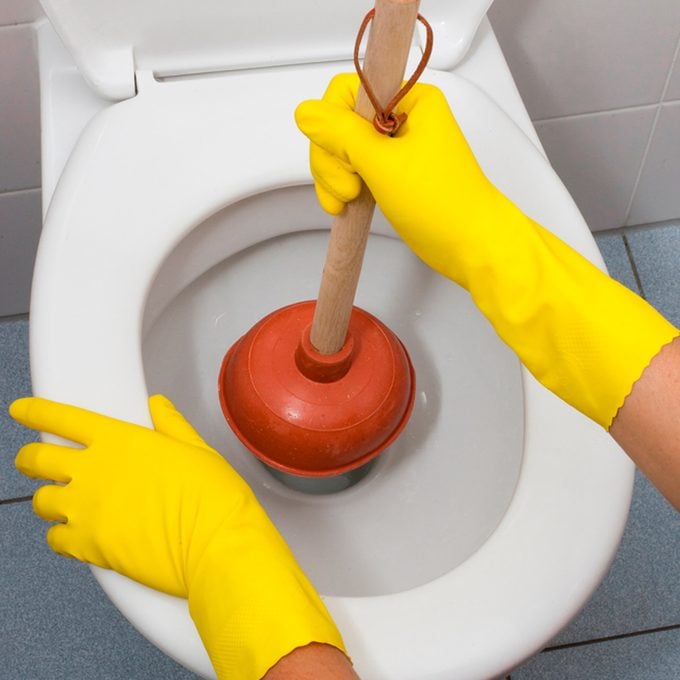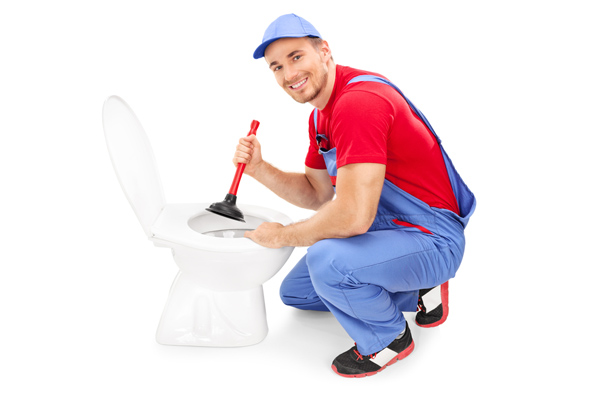Here underneath you will discover a good deal of incredibly good points about How To Use Your Toilet Plunger Correctly in 5 Easy Steps.

Intro
Proper maintenance of family drains pipes is important for avoiding obstructions and guaranteeing smooth water circulation. Among the trick devices in every homeowner's toolkit is the plunger, together with various drainpipe cleansers made to tackle stubborn blockages successfully. This write-up checks out exactly how to use plungers and drain cleansers properly to maintain your drains pipes streaming easily.
Section 1: Recognizing Bettors
Kinds of Plungers
There are several sorts of plungers readily available, each created for various kinds of drains pipes and blocks. The most common kinds include cup bettors, flange bettors, and accordion plungers.
Just How Plungers Work
Plungers work with the concept of producing stress and suction to dislodge obstructions. When correctly used over a drain, they produce a vacuum cleaner that can pull out debris or separate clogs.
Picking the Right Plunger
Picking the appropriate plunger depends on the type of drain and the nature of the blockage. Cup plungers are suitable for sinks and bathtubs, while flange plungers are better fit for bathrooms because of their design.
Common Mistakes with Bettors
Staying clear of these blunders guarantees efficient plunging: incorrect seal around the drain, insufficient pressure, and not clearing surrounding debris.
Section 2: Utilizing Plungers Effectively
Prep work
Prior to plunging, ensure the bettor covers the drain completely and creates a tight seal. Clear any kind of visible particles around the drainpipe opening.
Technique
Beginning with gentle diving motions to construct suction. Increase stress slowly, using a constant rhythm. Repeat as required till the drain gets rid of.
Troubleshooting Tips
If diving doesn't function, attempt readjusting the seal, applying oil jelly for a much better seal, or utilizing a different kind of plunger.
Section 3: Comprehending Drain Cleaning Company
Types of Drain Cleaners
Drain pipes cleansers can be chemical or chemical. Chemical cleaners utilize solid chemicals to dissolve obstructions, while enzymatic cleansers use natural enzymes to break down organic matter.
Just How Drainpipe Cleaning Company Job
Chemical cleansers react with clogs to dissolve them, while chemical cleansers break down organic products like hair and grease without damaging pipelines.
Security Considerations
Always put on gloves and eye protection when utilizing chemical drain cleansers. Guarantee ample ventilation and comply with producer directions thoroughly.
Eco-Friendly Alternatives
Take into consideration utilizing vinegar and baking soda or enzyme-based cleaners for eco-friendly alternatives that are much safer for pipelines and the setting.
Area 4: Utilizing Drainpipe Cleansers Properly
Application Techniques
Pour chemical cleansers directly right into the drainpipe opening. Enable them to help the suggested time prior to flushing with hot water. Enzymatic cleansers should sit over night.
Precautions
Avoid mixing various sorts of cleansers, as this can generate harmful fumes. Never make use of chemical cleaners together with a plunger, as splashing can happen.
Managing Stubborn Blockages
For consistent clogs, think about utilizing a plumbing snake or calling an expert plumbing professional to stop damages to pipes.
Conclusion
Finally, comprehending just how to utilize bettors and drain cleaners properly is essential for keeping healthy pipes systems. By choosing the right devices and methods, homeowners can take on minor obstructions and avoid significant plumbing problems down the line.
How to Use a Plunger to Unclog a Drain
The humble plunger is a simple yet effective tool for breaking clogs in sinks, tubs and toilets. This handy tool is easy to use. You can make the most of its power if you understand how it works. Ready to dive in? Here’s what you need to know.
Safety First!
Never use a plunger with drain chemicals. Water will splash as you work, and the chemicals can spatter, burning skin and eyes. It’s a good idea to use rubber gloves and wear safety goggles when you work on a clog.
Choose the Right Tool for the Job
Plungers come in two different styles. Sinks, bathtubs and showers require a cup plunger. Like its name suggests, the rubber end is shaped like a cup. Use a flange plunger on toilets. These plungers have a rubber funnel extending from the cup. A plunger needs to be big enough to cover the drain.
Ready, Set, Plunge!
Coat the rim: Coat the plunger rim with petroleum jelly. This helps make a better seal.
Block outlets: Hold a wet rag over nearby outlets such as the overflow vent or the drain in a second sink.
Release air: Insert the plunger at an angle into the water. Water will displace air in the cup. A water-filled cup is more forceful than one filled with air.
Keep the plunger upright: Hold the plunger perpendicular to the drain. Use fast, forceful strokes, but make the first stroke gentle. The first stroke can create a splash if the cup still contains air. Thrust the plunger 15 to 20 times.
Snap off the plunger: The final stroke should be a strong upward motion that ends when the plunger snaps off the drain.
Repeat the process: you may need to repeat this sequence several times. When the water drains away, your work is done. High-five! https://plumbernw.com/blog/how-to-use-a-plunger-to-unclog-a-drain/

Application Techniques
Pour chemical cleansers directly right into the drainpipe opening. Enable them to help the suggested time prior to flushing with hot water. Enzymatic cleansers should sit over night.
Precautions
Avoid mixing various sorts of cleansers, as this can generate harmful fumes. Never make use of chemical cleaners together with a plunger, as splashing can happen.
Managing Stubborn Blockages
For consistent clogs, think about utilizing a plumbing snake or calling an expert plumbing professional to stop damages to pipes.
Conclusion
Finally, comprehending just how to utilize bettors and drain cleaners properly is essential for keeping healthy pipes systems. By choosing the right devices and methods, homeowners can take on minor obstructions and avoid significant plumbing problems down the line.
How to Use a Plunger to Unclog a Drain
The humble plunger is a simple yet effective tool for breaking clogs in sinks, tubs and toilets. This handy tool is easy to use. You can make the most of its power if you understand how it works. Ready to dive in? Here’s what you need to know.
Safety First!
Never use a plunger with drain chemicals. Water will splash as you work, and the chemicals can spatter, burning skin and eyes. It’s a good idea to use rubber gloves and wear safety goggles when you work on a clog.
Choose the Right Tool for the Job
Plungers come in two different styles. Sinks, bathtubs and showers require a cup plunger. Like its name suggests, the rubber end is shaped like a cup. Use a flange plunger on toilets. These plungers have a rubber funnel extending from the cup. A plunger needs to be big enough to cover the drain.
Ready, Set, Plunge!
Coat the rim: Coat the plunger rim with petroleum jelly. This helps make a better seal. Block outlets: Hold a wet rag over nearby outlets such as the overflow vent or the drain in a second sink. Release air: Insert the plunger at an angle into the water. Water will displace air in the cup. A water-filled cup is more forceful than one filled with air. Keep the plunger upright: Hold the plunger perpendicular to the drain. Use fast, forceful strokes, but make the first stroke gentle. The first stroke can create a splash if the cup still contains air. Thrust the plunger 15 to 20 times. Snap off the plunger: The final stroke should be a strong upward motion that ends when the plunger snaps off the drain. Repeat the process: you may need to repeat this sequence several times. When the water drains away, your work is done. High-five! https://plumbernw.com/blog/how-to-use-a-plunger-to-unclog-a-drain/

Do you enjoy reading up on How To Use Your Toilet Plunger Correctly in 5 Easy Steps? Give a remark directly below. We'd be glad to see your suggestions about this article. We hope that you come back again later on. Sharing is good. You won't know, you will be doing someone a favor. I cherish your readership.
Book Services